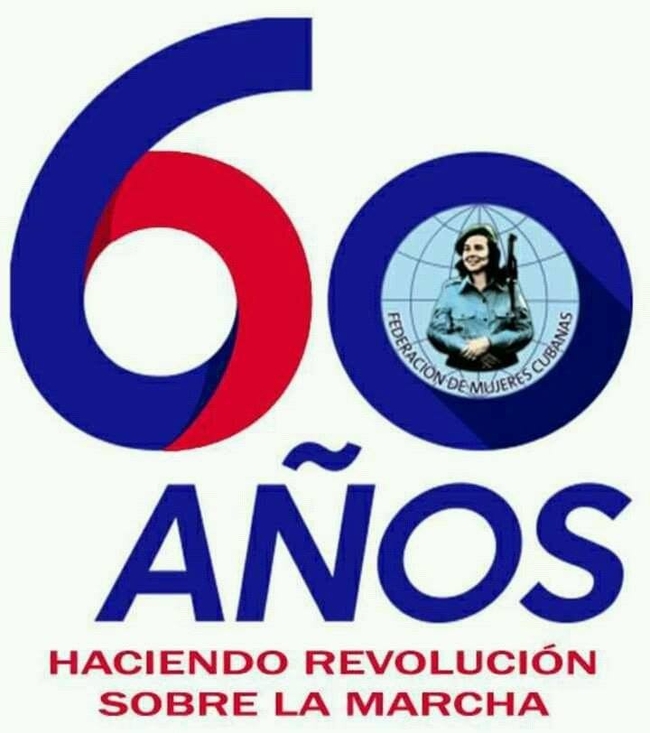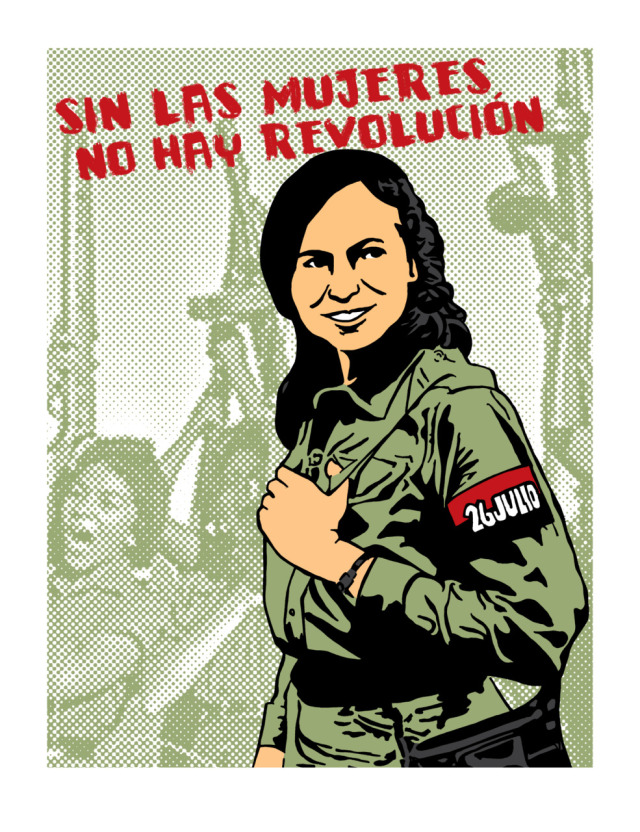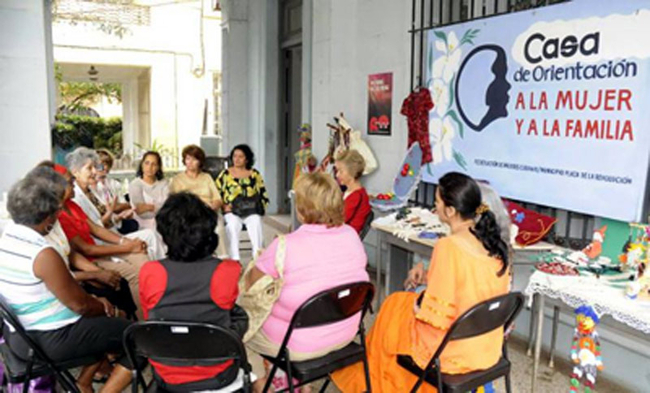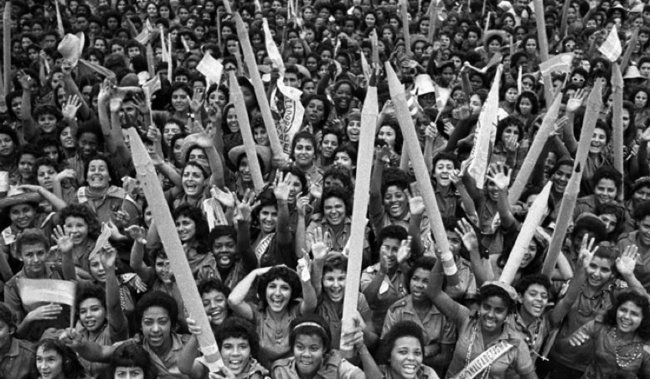Fighting for women’s rights - 60 years of the FMC
Campaign News | Tuesday, 11 August 2020

As the Federation of Cuban Women (FMC) approaches 60, Natasha Hickman looks back on its achievements and the struggles still to be won.
The history of Cuba’s independence struggle and the 1959 Revolution is peppered with courageous women who receive little recognition outside of Cuba.
Mariana Grajales, known as the “mother of the country”, was a black woman born in Santiago de Cuba in 1815, whose sons (including the famous General Antonio Maceo) fought in the 1868 War of Independence. Mariana herself ran hospitals and provision grounds and frequently entered the battlefield to aid wounded soldiers. Ana Betancourt was another pre-revolutionary leader who campaigned for women’s rights and an end to colonialism and slavery.
As the resistance to the dictator Fulgencio Batista gathered force, more women emerged through underground organisations such as the Frente Cívico de las Mujeres Martianas and Mujeres Unidas Oposicionistas, and later as part of the all-female guerrilla squadron Mariana Grajales. Women leaders who emerged from these times include Celia Sánchez, a founder member of the 26th of July Movement, and Haydée Santamaría and Melba Hernández, who took part in the famous 1953 rebel army assault on the Moncada Barracks, and were arrested and tortured with the men when the attack failed.
Post-Revolution, Celia became a member of the Cuban Council of State and oversaw the publication of Granma newspaper. Haydée established the Casa de las Americas and Melba became a politician and diplomat. Like many other Cuban women, they emerged from their participation in the underground movement and revolutionary war with new self-esteem, having broken the gender taboos of 1950s Cuba, occupied leading positions and become powerful role models for future generations.
Perhaps the most well-known, both in and outside Cuba, is Vilma Espín, founder and former President of the Federation of Cuban Women (FMC), an organisation to which she dedicated her life until her death in 2006.

The “revolution within the Revolution”
Even before the Revolution, its leaders took the decision to place women’s equality and rights at the heart of the revolutionary project. In 1955 the 26 July Movement published Manifesto Number One, committing itself to the “establishment of appropriate measures in education and legislation to end all vestiges of discrimination for reasons of race or sex that regrettably exist in the realm of social and economic life.”
In one of his first speeches after the triumph of the Revolution in 1959, Fidel Castro said women’s liberation was key to its success: “They are victims of discrimination at work and in other aspects of life [...] When our revolution is judged in the years to come, one of the questions that will be asked is how our society and our country resolved the problems of women, even though this is one of the problems of the Revolution that requires the most determination and firmness, the most perseverance and effort.” The emancipation of women became central to redefining Cuba’s future – what Fidel Castro described as “the revolution within a Revolution.”
The FMC was central to achieving this. It was the first mass organisation created by the new government, and with Vilma Espín at its helm it spearheaded equality programmes, served as an advocate for change and informed government policy.
Prior to the Revolution, most women could not work because they had to care for children at home. In 1961, the FMC opened state-funded daycare facilities that cared for newborns as young as seven weeks until they were old enough to attend school. One of the first tasks of the FMC was to free women from domestic service and prostitution. 100,000 women in pre-revolutionary Cuba were involved in prostitution, and the FMC took on the role of involving them in building a new society, offering education, stipends, and support. Many went on to train as nurses and build Cuba’s health service.
The Federation of Cuban Women today
Today the FMC’s primary task is to guarantee justice and equality for women in the workplace and at home. It has a research wing which provides input into government laws relating to women on issues ranging from employment, health and ageing, to domestic violence.
Its education wing provides training for policy-makers, for police officers working on gender violence cases, and content for radio programmes.
Since 1997 there has been a government plan for the advancement of the female population, which means that ministries have a responsibility to ensure their policies contribute to the advancement of women’s equality and well-being – and they must provide the FMC with annual accounts on what they have done to achieve this.

The FMC has four million members, 1,600 paid professionals, and 150,000 volunteers. Women affiliate for just three Cuban pesos a year. FMC orientation houses in each province offer women a range of services: from practical courses for setting up businesses and teaching skills and crafts to training and workshops on domestic and gender violence. Each house also offers counselling and family mediation services.
Equality guaranteed by law
The FMC formed part of the commission which drew up both Cuba’s 1975 and 2018 Constitutions, and the 1976 Family Code. It is also currently involved in the drafting of a new Family Code due to go out for public consultation in 2021.
Women are legally guaranteed economic, political, social, cultural and family rights. The Family Code that Espín promoted in 1976 also attempted to persuade men to take part in household chores and childcare. Article 26 states that marriage is an equal union, and that household labour and childcare should be shared between both parents. The aim was to legally mandate equality for women in the home. Although it is impossible to enforce, it did see men take on a greater share of domestic work than previously. But household chores and childcare still fall disproportionately to women – an issue the revision of the Family Code will look to address.
Pregnancy entitlement is exemplary in Cuba, thanks to the work of the FMC and the trade unions. Women are entitled to eighteen weeks of maternity leave on full pay. After that, either parent is eligible for up to 40 weeks at 60 per cent of pay. When they return to their jobs, women are allowed one hour a day to breastfeed. The FMC was instrumental in revising the law, which in 2003 gave both mothers and fathers the opportunity to choose who takes the 40 weeks of leave.
0.02% maternal mortality rate – the lowest in Latin America
53% of MPs – the second highest number in the world
64% of university graduates
80.45 years’ life expectancy – higher than the US
65% of international volunteers
Focus on women’s health
Cuba has the highest government spending on social services in Latin America, with 26 per cent of GDP spent on health. The constitutional commitments to free education and health were cornerstones in the effort to build a more equal society after the Revolution, and the positive impact on women is evident. According to Save the Children’s State of the World’s Mothers’ report, educating girls is “the most effective means of improving the well-being of women and children.”
Although health spending benefits the entire population, many of the country’s acclaimed health policies are specifically directed at women. These include programmes on maternal infant care, detection of cervical cancer, reproductive health and family planning, and family doctor and nurse programmes.
Contraception and abortion have been provided freely since 1965, when Cuba became the first country in Latin America to legalise abortion, and family planning services have positive implications for women’s health in a continent where free contraception is rare.
Women at work
Before the Revolution, women made up five per cent of the workforce – today they are almost half. Women make up the majority of judges, attorneys, lawyers, scientists, technical, finance, education, heath and public service workers. In joint ventures operated by Cuba with foreign investors, they hold more than 40 per cent of the jobs.
Men still dominate traditionally male roles such as construction, mining, and the ‘hard’ sciences, but there are signs women are breaking through. For example, 30 years ago only five per cent of engineers in Cuba were women. Today that number is 24 per cent – significantly higher than in the UK’s six per cent, and the US’s eleven.
Trade union delegations to Cuba frequently comment on the number of women they meet holding senior trade union posts in the regions and nationally.
Future challenges
Machismo, an aging population and the blockade, are the three major challenges facing the FMC today. The organisation has not yet been able to eradicate traditional sexist behaviour and gender stereotypes in the home. Attitudes are still moving at a slower pace than legal rights. For example, despite both parents being eligible for 40 weeks of parental leave when a child is born, it is still the mother that usually takes it. The FMC know that they have their work cut out in this area. The legacy of five centuries of patriarchal society, Spanish colonial rule and Catholicism will take longer than 60 years to eradicate. As Dania Rodríguez Gutiérrez, an FMC international officer, says: “we need more democracy in the family and to break down macho stereotypes which still exist in Cuban culture and are embedded in Cuban families.”
An ageing population and falling birth rate is also placing an enormous strain on the state’s capacity to provide services for social welfare. The tradition in Caribbean and Latin American societies of caring for relatives at home means this burden inevitably falls on women.
Society and family structures have undergone massive changes since the 1976 Family Code was drafted and the new Code will attempt to address these. The revision will likely expand the definition of family to recognise the reality of diverse family structures, include new protections for the elderly and people with disabilities, and address domestic violence, gender identity and same-sex marriage.
Many of the current challenges faced by women in Cuba are similar to those faced by women in the UK. However, the blockade is unique to Cuban women. British women still face the ‘double shift’ of domestic chores, but household essentials are not in such short supply. Most have access to modern conveniences, and transportation is not such a challenge. The FMC has said that it is difficult even to discuss gender equality when Cuban women face so many basic problems at home because of the blockade.
Six decades of the FMC
Celebrations for the 60th anniversary of the FMC have been put on hold because of the COVID-19 pandemic. In the last four months the FMC has been involved in organising community support programmes to aid vulnerable people. Their post-pandemic work to aid economic recovery in the face of the intensifying blockade includes promoting energy-saving measures and organising brigades and new cooperatives to support the Cultiva Tu Pedacito (Grow your bit) campaign (see page 23).
From 1 July until 23 August, the FMC is organising events to recognise the work of women in the community, as far as is possible within the constraints of Cuba’s COVID-19 social distancing guidelines. Exchanges are also taking place between women veterans of the clandestine struggle, revolutionary war and literacy brigades, and young members, to keep the history of the organisation alive.
As soon as it is possible, the FMC will also be involved in organising mass consultations around the new Family Code.
As soon as it is possible, CSC will host a delegation from the CSC for a national tour to mark their 60th anniversary. In the meatime we are organising an online celebration wthich will take place in August.
Watch the CSC meeting to celebrate the 60th anniversary of the FMC here

Women were instrumental in Cuba’s 1961 Literacy Campaign. Not only did they help to eradicate illiteracy (cutting it from 24 to 3 per cent), but their participation had a liberating effect in itself. They went to live and work with campesinos in remote rural areas: working the fields with them by day and giving classes at night. They experienced different parts of the country and new environments, and were empowered as equals with the men, carrying out the same duties as them – something that had not happened before.
Today, many women now in their 80s speak with pride and reverence about the part each played in the literacy campaign, how it changed Cuba, and how it changed them.
One of the participants, Leonela Relys Díaz, who was 14 years old when she volunteered as a brigadista, went on to invent the Yo Sí Puedo (Yes I Can) alphanumeric literacy method, which has been used in more than 30 countries to teach 9 million people to read.
Today, Cuba boasts a literacy rate of more than 99%, that of a developed country. Women now outnumber men at university level, representing 68% of students receiving university degrees.
Watch Maestra, a film about the 1961 literacy campaign here






